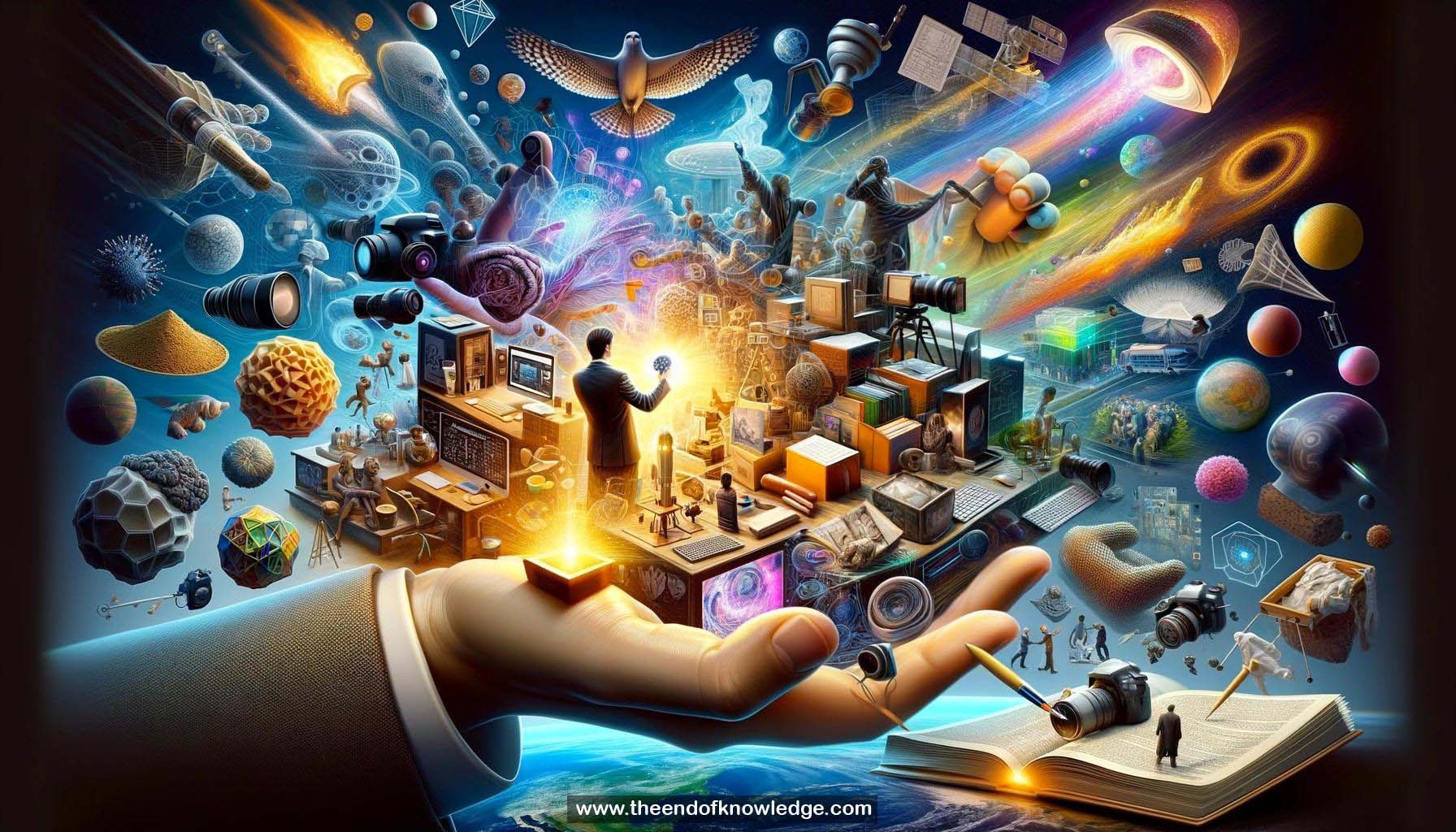 >
>
Concept Graph & Resume using Claude 3 Opus | Chat GPT4o | Llama 3:
Resume:
1.- Physics-based models capture reality and enable seamless transitions between virtual and real worlds for mixed reality applications.
2.- Visual discovery at planet scale uses visual recognition to discover trends, cultural events, crop changes, and ecological events around the globe.
3.- Micron-resolution images reveal details critical to object and material appearance that are not visible to the naked eye.
4.- World-scale images allow understanding culture and society by recording human lives at an unprecedented rate.
5.- Satellite images at planet scale capture ecological changes like algal blooms and can help understand and aid the changing planet.
6.- The Cornell box in 1988 introduced a visual Turing test and the idea of physics-based graphics simulating light and appearance.
7.- Real-world materials like cloth, skin and food are complex and challenging to make look realistic compared to simple Cornell box.
8.- Fabric appearance comes from yarn and weave structure at the micron level, not just surface properties.
9.- CT scans provide 3D volumes of material structure at micron resolution to build realistic appearance models.
10.- Matching a photo's mean and standard deviation approximates material albedo and gloss, as structure does most of the work.
11.- Cloth appearance depends on structure - velvet's fuzziness from protruding yarns/fibers, silk's shine from interleaved warp and weft.
12.- Best velvet and silk appearance models to date use CT scans for structure and photos for simple optical parameters.
13.- Controllability of models is important - changing yarn parameters and weave patterns alters cloth appearance for design prototyping.
14.- Goal is end-to-end virtual prototyping pipeline matching real production pipeline to enable efficient, predictable design without physical trial-and-error.
15.- Despite progress, challenges remain in making realistic cloth models more intuitive for designers/artists to use.
16.- Inverse graphics bridges real and virtual worlds by recovering shape, materials and lighting from images using differentiable rendering.
17.- Scattering is critical for realism and requires going beyond simple surface models to volumetric models and participating media.
18.- Large language models produce plausible images but graphics models with physics are complementary and enable intuitive artistic control.
19.- Analyzing millions of worldwide photos reveals distinctive local styles and ubiquitous international styles of clothing.
20.- Clothing is influenced by weather, culture, occasion, fashion - spatio-temporal analysis shows seasonal and event-based style changes.
21.- Removing weather patterns reveals spikes corresponding to cultural events like holidays, protests, sporting events.
22.- Visual discovery tools could aid anthropologists in understanding culture and finding previously unknown global and local phenomena in photos.
23.- Satellites collect 100 TB/day from 1500 satellites compared to just 30 satellites 10-15 years ago - huge opportunities to leverage.
24.- Satellite data can monitor crop health, forest fires, drought, construction to understand environmental and ecological change.
25.- More computer vision research is needed on planet-scale unsupervised event detection leveraging the scale and temporal resolution of satellite data.
26.- Working with domain experts is important to learn what problems are meaningful to solve and to understand societal impact.
27.- With great power comes great responsibility - consciously consider societal impact as computer vision grows in influence.
28.- Going beyond classical optics to wave/quantum optics may be needed for material appearance at small scales.
29.- Expanding beyond visible light to other wavelengths can provide information for applications like crop health monitoring.
30.- Progress in realistic appearance modeling has been steady in the research community with models improving in quality and performance over time.
Knowledge Vault built byDavid Vivancos 2024